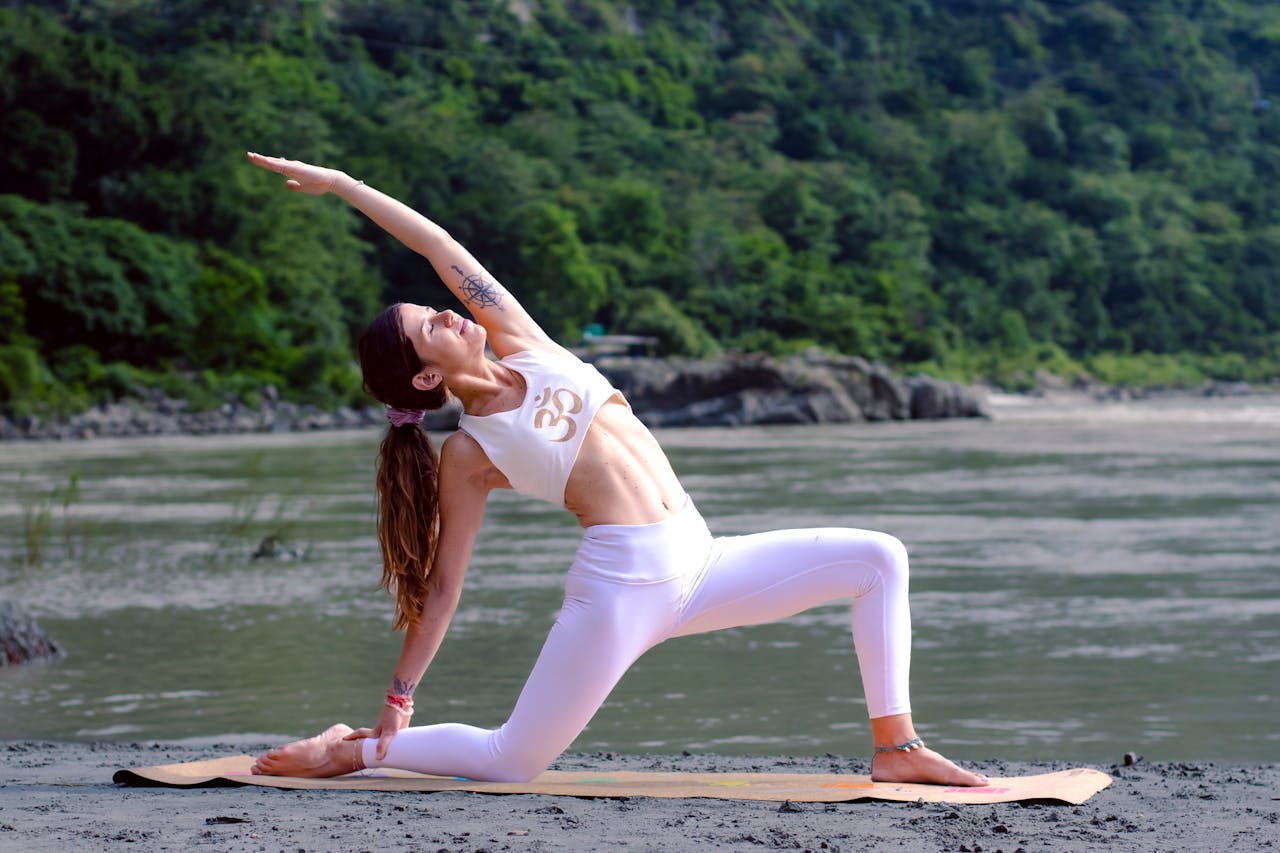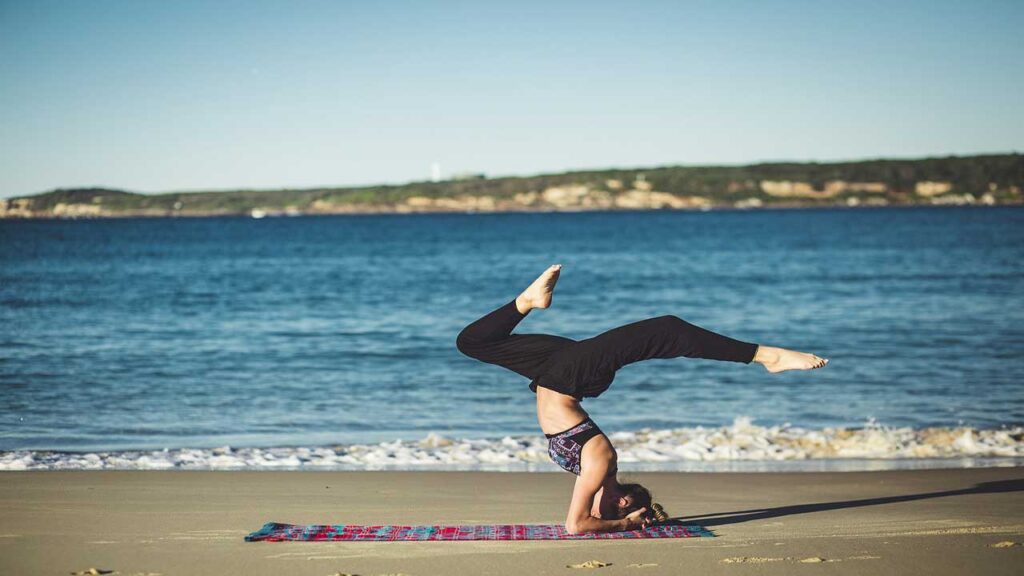
Yin Yoga: 7 Transformative Insights for Beginners to Start Practicing
Table of Contents
Introduction: What is Yin Yoga?
Yin Yoga is a calming and meditative style of yoga that focuses on long-held postures designed to stretch the deeper connective tissues in the body, such as ligaments, tendons, and fascia. Unlike more dynamic yoga styles like Vinyasa or Ashtanga, Yin Yoga emphasizes stillness and surrender, creating space for mindfulness and introspection.
For beginners, Yin Yoga offers an accessible way to explore yoga without requiring advanced flexibility or strength. In this guide, we’ll share seven transformative insights to help you kickstart your home practice with confidence and ease.
1. The Philosophy Behind Yin Yoga
The foundation of Yin Yoga lies in Taoist principles of balance between yin (passive) and yang (active) energies. While yang practices focus on building strength and movement, yin practices encourage stillness, receptivity, and introspection. This duality is essential for achieving harmony in life and is reflected in the practice of yoga.
In Traditional Chinese Medicine (TCM), it’s believed that energy flows through meridians in the body. Yin Yoga stimulates these meridians by targeting specific areas with long-held poses, promoting the free flow of qi (life force). This balance not only enhances physical well-being but also fosters emotional harmony.
Yin Yoga focuses on long-held postures that target the body’s connective tissues—ligaments, tendons, fascia, and even bones. Unlike more vigorous styles of yoga, Yin Yoga encourages relaxation of the muscles to allow deeper stretches into these less elastic tissues. By holding poses for extended periods—typically three to five minutes or longer—Yin Yoga promotes flexibility and relaxation while also enhancing circulation and overall joint health.
Moreover, Yin Yoga is often described as “acupuncture without needles” due to its focus on stimulating the body’s meridian system. By applying gentle pressure on specific areas of the body through long-held poses, practitioners can enhance the flow of qi, leading to better organ function, emotional balance, and a heightened sense of well-being. At its core, Yin Yoga is about finding balance—both within the body and in life. It offers a holistic approach to wellness that integrates physical postures with mental clarity and emotional equilibrium.
2. Physical and Mental Benefits of Yin Yoga
Physical Benefits:
Improved Flexibility
Yin Yoga’s long-held poses, typically lasting three to five minutes or more, allow for deep stretching of connective tissues including ligaments, tendons, and fascia. This gradual approach helps increase the range of motion in joints, making it particularly beneficial for those experiencing stiffness from daily activities or a sedentary lifestyle. Regular practice can lead to significant improvements in overall flexibility, which is crucial for maintaining mobility and preventing injuries as we age.
Enhanced Circulation
The extended hold times in Yin Yoga poses encourage increased blood flow to deeper tissues. This improved circulation helps nourish cells more effectively and aids in the removal of waste products. As the body relaxes into each pose, there’s a gentle release of tension in muscles and connective tissues, further facilitating better blood flow throughout the body. Enhanced circulation can lead to improved organ function and overall vitality.
Joint Health
Yin Yoga gently stresses ligaments and tendons around joints, which helps maintain their health and function. This gentle stress stimulates the production of synovial fluid within the joints, acting as a natural lubricant. By incorporating Yin Yoga into your routine, you can help keep your joints flexible and mobile, reducing the risk of stiffness and potential injuries. This aspect of Yin Yoga is particularly beneficial for maintaining joint health as we age or for those with less active lifestyles.
Mental Benefits:
Stress Relief
Yin Yoga provides a sanctuary for relaxation and stress reduction. The practice encourages mindfulness and introspection, allowing practitioners to slow down and connect with their breath. This focus on stillness can help calm the mind, reduce anxiety, and promote emotional balance. As you settle into each pose, you may find your worries begin to fade, leaving you with a sense of peace and tranquility.
Enhanced Mindfulness
The practice of Yin Yoga cultivates mindfulness by encouraging practitioners to pay close attention to their bodies and breath during long-held poses. This heightened awareness can enhance emotional regulation and build resilience. By creating space for self-reflection, Yin Yoga allows individuals to explore their thoughts and feelings without judgment, which can be particularly beneficial for those dealing with emotional challenges.
Improved Emotional Balance
Regular practice of Yin Yoga can contribute to better emotional balance. The meditative aspect of the practice allows for processing of emotions and can lead to a more balanced emotional state. By providing time for introspection and self-awareness, Yin Yoga can help practitioners develop a deeper understanding of their emotional patterns and responses.By incorporating Yin Yoga into your routine, you can experience these physical and mental benefits, contributing to an overall sense of well-being and improved quality of life
“Yin Yoga offers a wealth of benefits that go beyond just physical flexibility—it’s a holistic practice that nurtures both body and mind.”
Yin Yoga is a gentle yoga practice rooted in Taoist principles, focusing on long-held poses that target connective tissues like ligaments, tendons, and fascia. Unlike dynamic yoga styles, Yin Yoga emphasizes stillness and surrender, typically holding poses for three to five minutes.The practice offers numerous benefits:
Key Practice Elements:
- Rooted in balance between yin (passive) and yang (active) energies
- Targets meridian pathways recognized in Traditional Chinese Medicine
- Stimulates qi (vital life force) flow
- Supports organ function
- Enhances overall well-being
3. Essential Poses for Beginners
If you’re new to Yin Yoga, start with these beginner-friendly poses:
- Child’s Pose (Balasana): A gentle stretch for the back and hips.
- Butterfly Pose (Baddha Konasana): Opens the hips while promoting relaxation.
- Caterpillar Pose (Paschimottanasana): Stretches the spine and hamstrings.
- Sphinx Pose: Strengthens the lower back while opening the chest.
- Reclined Bound Angle Pose (Supta Baddha Konasana): Calms the nervous system.
“Begin your practice with these simple yet effective poses that are perfect for easing into Yin Yoga.”
Ready to Transform Your Practice? Join Us for an Unforgettable Yoga Retreat!
Escape the hustle and bustle of daily life and immerse yourself in a rejuvenating experience. Click below to explore our upcoming retreats and secure your spot today! Embrace relaxation, deepen your practice, and connect with like-minded individuals. Don’t miss out—enroll now!
4. Creating Your Yin Yoga Space at Home
Creating a dedicated space for your Yin Yoga practice at home is essential for fostering a calming and inviting atmosphere that enhances your experience. A well-designed practice area not only helps you focus but also encourages relaxation and mindfulness. Start by selecting a quiet corner or room in your home that is free from distractions.
Consider using soft lighting, such as lamps or candles, to create a soothing ambiance. Incorporate comfortable props like mats, bolsters, and blankets to support your practice and provide comfort during long-held poses. Personalize your space with elements that inspire tranquility, such as plants, artwork, or calming scents from essential oils. By thoughtfully setting up your Yin Yoga space, you create a sanctuary for self-exploration and relaxation, allowing you to fully immerse yourself in the transformative benefits of this gentle practice.
Tips for Setting Up Your Space:
- Choose a Quiet Spot: Select an area free from distractions.
- Use Soft Lighting: Dim lights or candles create a calming atmosphere.
- Gather Props: Use blankets, bolsters, or blocks for support.
- Add Personal Touches: Incorporate plants or soothing scents like lavender.
“Creating a peaceful space at home sets the tone for a fulfilling Yin Yoga practice.”
5. The Importance of Breath in Yin Yoga
Breathing deeply is central to any yoga practice but takes on special importance in Yin Yoga due to its focus on relaxation. In Yin Yoga, breath serves as a powerful tool for deepening the practice, connecting mind and body, and facilitating profound inner transformation.
Why Breath Matters in Yin Yoga?
Breath in Yin Yoga is more than just a physiological function—it’s a gateway to mindfulness and inner peace. Unlike more dynamic yoga styles, Yin Yoga emphasizes slow, intentional breathing that:
- Helps practitioners stay present during long-held poses
- Reduces stress and anxiety
- Promotes deep relaxation
- Enhances mind-body connection
- Supports the release of physical and emotional tension
Key Breathing Techniques:
1. Diaphragmatic Breathing
- Lie down or sit comfortably
- Place one hand on chest, another on abdomen
- Inhale deeply through nose, expanding abdomen
- Exhale slowly, feeling abdomen fall
- Focus on creating a smooth, continuous breath cycle
2. Box Breathing
- Inhale for 4 counts
- Hold breath for 4 counts
- Exhale for 4 counts
- Hold empty lungs for 4 counts
- Repeat the cycle
3. Ujjayi Breath
Characteristics:
- Slight constriction of throat creates ocean-like sound
- Helps maintain focus
- Regulates body temperature
- Promotes internal heat and energy flow
4. Benefits of Mindful Breathing in Yin Yoga
- Stress Reduction: Activates parasympathetic nervous system
- Enhanced Flexibility: Helps muscles and connective tissues relax
- Emotional Release: Creates space for processing emotions
- Improved Concentration: Anchors mind to present moment
“Your breath is your anchor during Yin Yoga—it helps you stay present and deepen each pose.”
Breathing Techniques:
- Diaphragmatic Breathing: Engage your diaphragm for deeper breaths.
- Box Breathing: Inhale for four counts, hold for four counts, exhale for four counts, hold again.
- Ujjayi Breath: A slow and controlled breath that enhances focus.
Your breath serves as a grounding force during Yin Yoga, allowing you to remain present and deepen your experience in each pose.
6. Developing a Consistent Practice Routine
Establishing a regular Yin Yoga routine is essential for experiencing its full benefits. Consistency enables you to develop strength, flexibility, and mindfulness progressively over time.
Tips for Building a Routine:
- Start Small: If you’re new to Yin Yoga, begin with shorter sessions (15–20 minutes) and gradually increase the duration as you become more comfortable.
- Schedule Your Practice: Try to practice at the same time each day or week to create a habit. Whether it’s early morning or before bed, find a time that works best for you.
- Combine with Other Practices: If you enjoy other styles of yoga or meditation, consider incorporating them into your routine. Yin Yoga can complement more dynamic practices by providing balance and relaxation. Combine your practice with meditation or journaling.
- Set Goals: Establish specific goals for your practice—whether it’s improving flexibility, reducing stress, or simply enjoying quiet time with yourself. Setting intentions can serve as a powerful motivator..
Building a consistent routine ensures that you fully reap the cumulative benefits of this transformative practice.
7. Embracing Your Yin Yoga Journey: Final Thoughts
Yin Yoga is more than just a physical practice—it’s an opportunity to connect with yourself on a deeper level. By embracing stillness and mindfulness, you can unlock profound physical, mental, and emotional benefits. As you progress on your journey, keep in mind that growth takes time. Celebrate small victories along the way and enjoy the process of self-discovery. ” Your journey with Yin Yoga is uniquely your own—approach it with patience and an open mind “.
Mindfulness in Practice
Incorporating mindfulness into your practice can enhance its effectiveness. Pay attention to how each pose feels in your body and allow yourself to be present in the moment. Acknowledge any thoughts or emotions that arise without judgment—this awareness is part of the journey.
Community Connection
Consider joining a local Yin Yoga class or online community to connect with others who share similar interests. Engaging with fellow practitioners can provide support and inspiration as you navigate your own path.
FAQs: Yin Yoga for Beginners
Yin Yoga is best for improving flexibility, reducing stress, and enhancing mindfulness.
Start with 2–3 times per week and gradually increase as you feel comfortable.
Props like bolsters or blocks can enhance comfort but aren’t mandatory.
Yes! It’s accessible to all levels.
Yes, but listen to your body and avoid overstretching.
Typically 3–5 minutes per pose.
Absolutely! It complements more dynamic practices like Vinyasa.
No—Yin Yoga is suitable for all ages.
Wear comfortable clothing that allows free movement.
While it’s not focused on weight loss, it supports overall well-being.
Expect a slower pace focused on long-held poses that promote relaxation.
Some discomfort is normal; however, listen to your body and avoid pain.
Yin focuses on deep stretching of connective tissues rather than muscle engagement.
Always consult with a healthcare professional before starting any new exercise program if you have injuries.
Many believe it’s easy; however, it requires patience and introspection.
Focus on comfort rather than perfection; use props as needed.
Any time works; choose what feels best for you—morning or evening.
Yes! It can be beneficial for children by promoting relaxation and mindfulness.
Set goals, track progress, and engage with a community for support.
Benefits can be felt immediately; however, consistency over weeks or months leads to lasting change.



1916cb
vth54k
5v1ypj
8xcegf
My spouse and I stumbled over here from a different website and thought I might check things out. I like what I see so i am just following you. Look forward to finding out about your web page for a second time.
I like what you guys are usually up too. This kind of clever work and reporting! Keep up the wonderful works guys I’ve added you guys to blogroll.
Hi there I am so delighted I found your web site, I really found you by error, while I was searching on Askjeeve for something else, Anyhow I am here now and would just like to say kudos for a remarkable post and a all round thrilling blog (I also love the theme/design), I don’t have time to read it all at the minute but I have bookmarked it and also included your RSS feeds, so when I have time I will be back to read much more, Please do keep up the superb work.